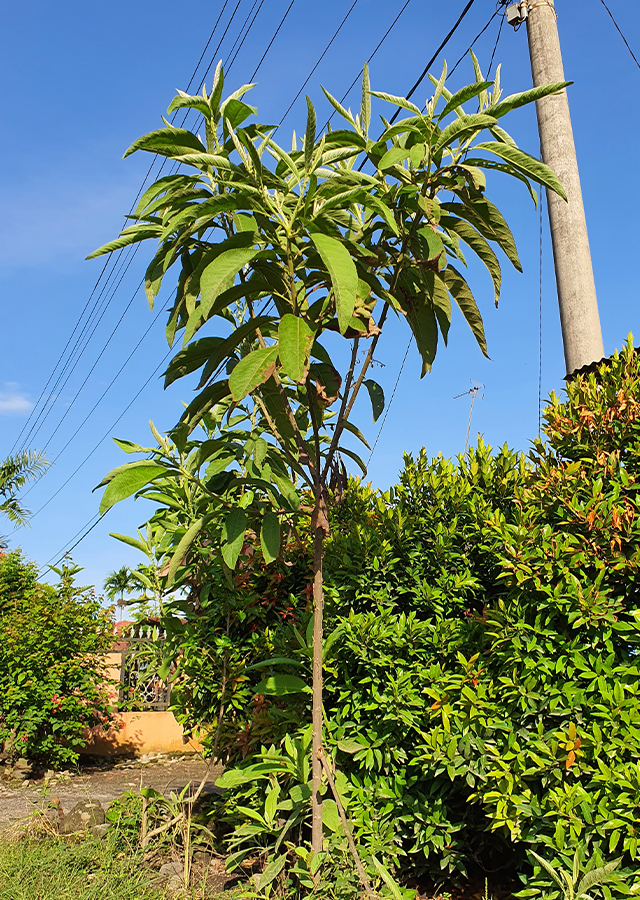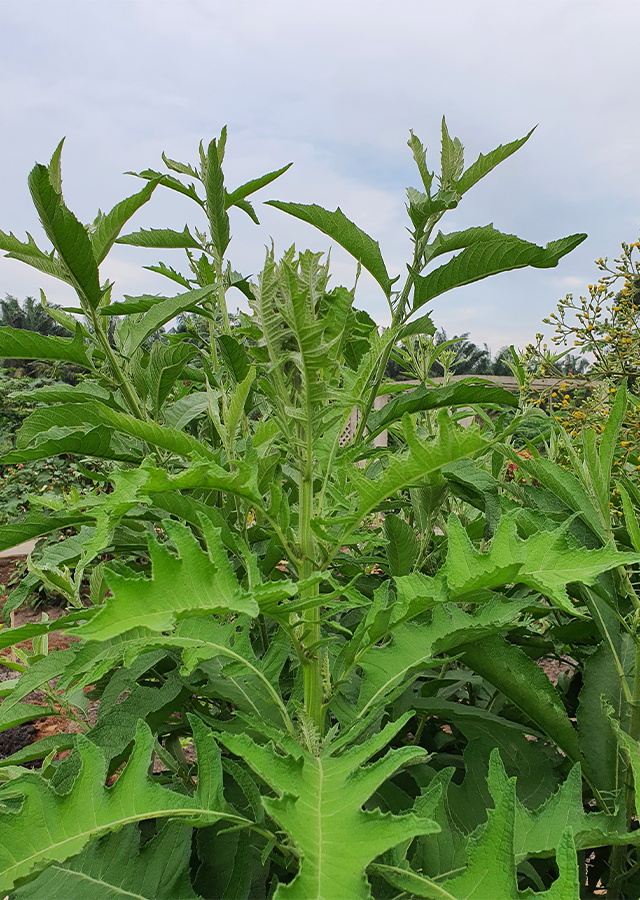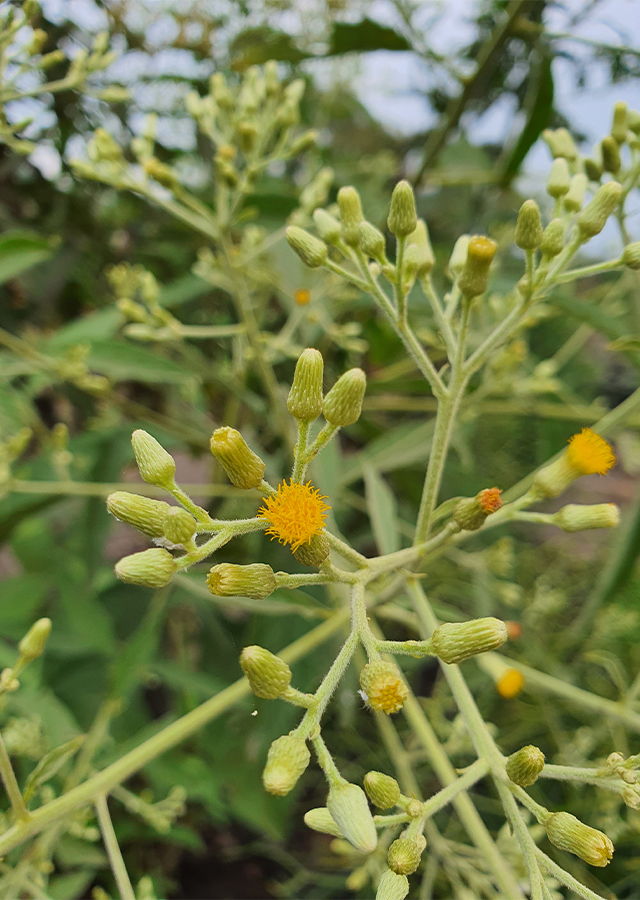Nga Champora Plant
Blumea balsamifera (L.) DC.
Asteraceae
Location in our garden
Principal



Synonym
Baccharis balsamifera (L.) Stokes
Baccharis gratissima Blume ex DC.
Baccharis salvia Lour.
Habitus
Shrubs. A half woody, evergreen, strongly aromatic perennial shrub, 1 to 4 m high
Part Used
Leaves
Bark
Roots
Growing Requirements
Full Sunshine
Habitat
Riverbanks
Forest
Mountains
Shrublands
Grassland
Overview
Nga champora plant has a long history of medicinal use and is also the source of an essential oil. It is one of the most common and widely used medicinal plants for a number of ailments in South-East Asia and has been used in Chinese medicine since ancient times. The camphor-scented leaves are sometimes used as an aromatic condiment with various foods.
Vernacular Names
Da feng ai (Chinese), Buarthau (India), Chapor (Malaysia), Camphrier (French), Naat Yai (Thai), Sembung (Indonesia).
Agroecology
This plant grows on forest edges, under forests, river beds, valleys and grasses, also on disturbed land. It can be found at elevations from sea level to 2,200 m. The plant is very tolerant of fire and is frequently found in regularly burned grassland.
Morphology
- Stem - branching 2 - 8 cm in diameter that become woody, at least at the base.
- Leaves - alternate, petiolate, petioles up to 1.5 cm long, auricled or winged, lamina 11-15 cm long, elliptic oblanceolate or lanceolate, densely silky or woolly beneath, serrate, rarely irregularly shortly pinnatifid, acute-acuminate at the tip, narrowed at the base.
- Flowers - yellow, a capitulum, 4-5 x 3-4 mm,subsessile or peduncled, peduncles up to 3 mm long.
- Fruits - a cypsela, up to 0.7 mm long, 5-7 ribbed.
Cultivation
Propagated through seeds, root cuttings (layering) and stem cuttings.
Chemical Constituents
Flavonoid, phenols, tannins.
Traditional Medicinal Uses
- A potent antioxidant, analgesic, and anti-diarrhea agent.
- Treat headaches, colds, fever, diabetes, and reduce menstrual pain.
Part Used
Reference Sources
- Kusumawati, I.G.A.W. and Yogeswara, I.B.A. (2016). Antioxidant and antibacterial capacity of loloh sembung (Blumea balsamifera) based on extraction method. Trad. Med. J. 21(3): 143-148.
- Larasati, E.K., Ahmad, I., and Ibrahim, A. (2015). Efek antidiare ekstrak daun sembung (Blumea Balsamifera L.) terhadap mencit putih. Jurnal Sains dan Kesehatan 1(2): 56-60.
- Lestari, L. (2004). Efek analgetik ekstrak n-heksan dan etanol daun sembung (Blumea balsamifera (L.) DC) pada mencit jantan BALB/C dengan metode geliat. Undergraduate Thesis. Jurusan Farmasi, Fakultas Matematika dan Ilmu Pengetahuan Alam, Universitas Islam Indonesia, Yogyakarta.
- Mantra, I.B.K., Putra, I.N.K., and Wrasiati, L.P. (2019). Karakterisasi senyawa bioaktif ekstrak daun sembung (Blumea balsamifera (L)DC) dari beberapa jenis pelarut. Media Ilmiah Teknologi Pangan (Scientific Journal of Food Technology) 6(1): 54-65.
- Nursamsu and Firmansyah. (2017). Pemanfaatan daun sembung (Blumea balsamifera) sebagai obat tradisional di Kampung Jawa Kecamatan Kejuruan Muda Kabupaten Aceh Tamiang tahun 2015. Jurnal Jeumpa 4(2): 8-13.


